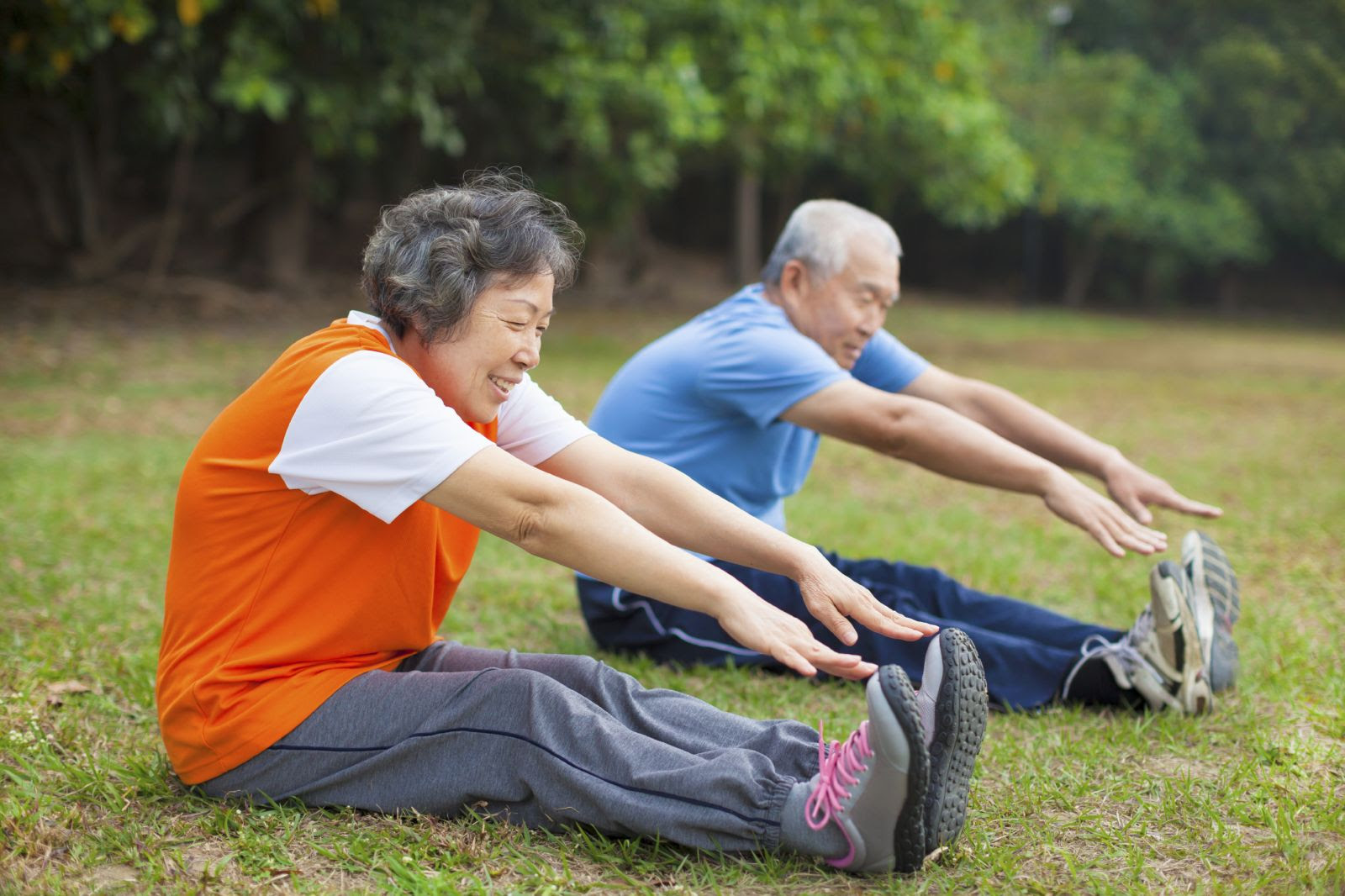
How stretching keeps your joints moving |

Your range of motion — how far you can move a joint in various directions — is determined by many things, starting with the inner workings of the joint and the structures surrounding it. Stretching exercises can help extend this range of motion. To understand how, it helps to be familiar with these structures and how they can help — or hinder — a joint's flexibility:
- Joints are the junctions that link bones together. The architecture of each joint — that is, whether its structure is a hinge, pivot, or ball-in-socket — determines how the bones can move.
- Muscles surround joints and provide the energy used to move them. The amount of tension in the muscles surrounding a joint is a key factor in how big of a range of motion that joint can achieve. Muscle tension can be affected both by passive factors, such as tissue scarring or your habitual posture, and by active factors, such as involuntary muscle spasms or purposeful muscle contractions.
- Tendons are flexible cords of strong tissue that connect muscles to bones and make movement possible. When a joint moves, energy from the muscles is transferred into the tendons, which tug on the bones.
- Ligaments are tough, fibrous bands of tissue that bind bone to bone, or bone to cartilage, at a joint. An example is the anterior cruciate ligament (ACL), one of five ligaments that together control the movements of the knee. Among other things, the ACL keeps the knee joint from rotating too far.
When you stretch, you're working muscles and tendons rather than ligaments. Ligaments are not supposed to be elastic. An overly stretchy ligament wouldn't provide the stability and support needed for a safe range of movement.
For more on ways to improve your strength and flexibility, buy Stretching, a Special Health Report from Harvard Medical School.
Calling all desk jockeys: Stretching to ease neck and shoulder pain

Image: iStock
Any task that encourages you to sit in one position for long hours can wreak havoc on posture. Even enjoyable hours whiled away with an e-reader or a tablet may have that effect — and worse. A study from the Harvard T.H. Chan School of Public Health, Brigham and Women's Hospital, and Microsoft showed that holding a tablet too low in your lap can force the muscles and bones in the neck into an unnatural posture, which may strain or aggravate other muscles, nerves, tendons, ligaments, and spinal discs. Over time, poor posture chips away at the range of motion in your joints. The neck problems described in the study above — and repetitive stress injuries from tasks such as typing — may occur, too.
Fortunately, good ergonomics and regular posture checks can help combat these problems.
Ergonomics for computers, phones, and tablets
If you use a laptop or desktop computer:
- Choose a chair with good lumbar support, or place a pillow against the small of your back.
- Position the top of your monitor so it's just below eye level.
- Sit up straight with your head level, not bent forward.
- Keep your shoulders relaxed and your elbows close to your body.
- Keep hands, wrists, forearms, and thighs parallel to the floor.
If you use a handheld phone:
- Avoid propping the phone between your head and shoulder.
- Consider investing in a comfortable, hands-free headset. Depending on your needs, you can choose one designed for use with cordless phones, landlines, or computers.
If you use an e-reader or tablet:
- Buy a case that allows you to prop the device at a comfortable viewing angle, one that doesn't require you to bend your neck much.
- Change things up every few minutes. "Usually we tell people they should change their position every 15 minutes," says Dr. Jack Dennerlein, principal investigator of the tablet study and an adjunct professor or ergonomics and safety at the Harvard T.H. Chan School of Public Health. "Just change your hands, shift your weight. Stand up or sit down."
For more ways to relieve tight, stiff muscles and improve your posture, buy Stretching, a Special Health Report from Harvard Medical School.
 |
Stretching
Featured content:
| • | Stretching: The basics |
| • | Safety first |
| • | Stretching to ease pain |
| • | Six questions (and answers) about stretching exercises |
| • | SPECIAL SECTION: Warming up for sports with dynamic stretches |
| • | ... and more! |
Click here to read more »






















.png)











No hay comentarios:
Publicar un comentario